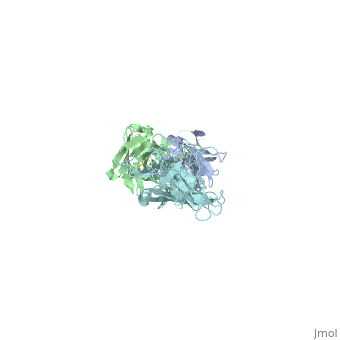OspA L03 Group2
OspA ProteinOspA Protein
Test
IntroductionIntroduction
|
Lyme disease has been affecting many individuals year around developing chronic arthritis, neurologic and cardiac abnormalities, and skin lesions (Burgdorfer, 1982). The bacterial vector, Borrelia burgdorferi is spread through the bite and feeding of ticks bringing initial severe skin lesions, erythema chronicum migrans (Burgdorfer, 1982). Outer surface protein A, or OspA is found to inhibit bacterial transmission (Ding, 2000). Outer surface protein A, or OspA was found to initiate an immune response that contributed towards the development of Lyme disease vaccinations by preventing the transmission of Borrelia burgdorferi, the causative bacterial agent of Lyme disease after the attachment of an infected tick (Ding, 2000). Once entered the host through the skin or blood stream, Borrelia burgdorferi downregulated and suppressed OspA to minimize all of the host’s immunogenic characteristics (Rupprecht, 2008). When OspA on the spirochete migrated to an inflammatory environment, it induced apoptosis on the bacteria through the activation of B-cells (Rupprecht, 2008). Only OspA positive in borrelia bacteria were unable to establish an infection compared to OspA negative bacteria successfully hosted in studies of mice (Rupprecht, 2008). OspA known as a potent stimulator of neutrophils was able to kill the pathogen and attract leukocytes allowing the release of proinflammatroy cytokines in a host (Ruprecht, 2008) and avoid contracting Lyme disease as it affects the heart, joints, and nervous system (Rupprecht, 2008). The reactive LA-2 antibody was found to serve as an important epitope of Osp-A binding (Ding, 2000) towards developing vaccinations. The 1FJ1 protein obtained from PDB was dissected to isolate and concentrate the F chain from the molecule of OspA from the crystallized structure, since the structure was symmetric. The free state of the 3D model exposed the C-terminal where there were 49 residues from the “three loops” involved that significantly affected by LA-2 binding, through findings from NMR and crystallization (Ding, 2000).
About OspAAbout OspA
La-2La-2
FunctionsFunctions
References:
Cite error: Invalid parameter in <ref> tag
Cite error: Invalid parameter in <ref> tag
